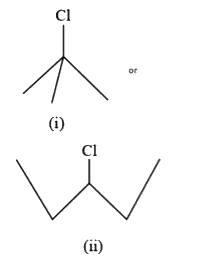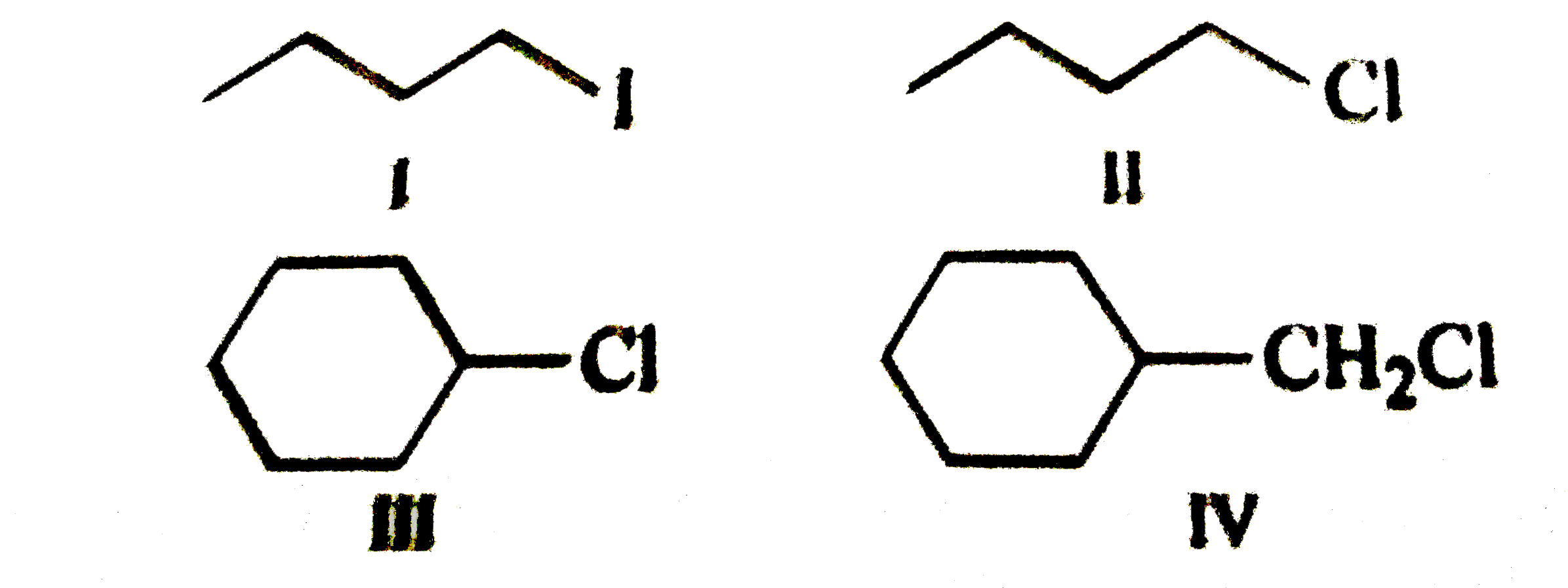Which of the following two substances undergo Syl reaction faster and why?

Text Solution
In SN1 reaction reactivity depends upon the reactivity of intermediate carbocation. A secondary carbocation is more stable than primary carbocation.

Former carbocation being secondary is more stable than the latter being primary. Hence,

|
Topper's Solved these Questions
- HALOALKANES AND HALOARENES BOOK - U-LIKE SERIESCHAPTER - HALOALKANES AND HALOARENES EXERCISE - LONG ANSWER QUESTIONS -I (3 marks each )
38 Videos
- HALOALKANES AND HALOARENES BOOK - U-LIKE SERIESCHAPTER - HALOALKANES AND HALOARENES EXERCISE - SELF ASSESSMENT TEST ( SECTION A )
7 Videos
- HALOALKANES AND HALOARENES BOOK - U-LIKE SERIESCHAPTER - HALOALKANES AND HALOARENES EXERCISE - VERY SHORT ANSWER QUESTIONS (1 mark each )
44 Videos
- GENERAL PRINCIPLES AND PROCESSES OF ISOLATION OF ELEMENTSBOOK - U-LIKE SERIESCHAPTER - GENERAL PRINCIPLES AND PROCESSES OF ISOLATION OF ELEMENTSEXERCISE - SELF ASSESSMENT TEST
7 Videos
- POLYMERS BOOK - U-LIKE SERIESCHAPTER - POLYMERS EXERCISE - SELF ASSESSMENT TEST ( SECTION -A (ASSERTION AND REASON))
2 Videos
Similar Questions
Knowledge Check
Which one of the following two substances undergoes SN1 reaction faster ?
 A(i)B(ii)C(iii)DBoth have equal rate for reaction.
A(i)B(ii)C(iii)DBoth have equal rate for reaction.Which of the following haloalkanes would undergo SN2 reaction faster
 AIBIICIIIDIV
AIBIICIIIDIVWhich of the following compounds should undergo chlorination faster than the remaining three?
An-PentaneBNeopentaneCIsopentaneDn-Butane
(i) Why are haloalkanes more reactive towards nucleophilic substitution reaction than haloarenes ?
(ii) Which one of the following two substance sundergoes SN1 reaction faster and why ?

View SolutionWhich of the following compounds would undergo SN1 reaction faster and why ?

View SolutionWhich of the following compounds would undergo SN1 reaction faster and why ?

View SolutionWhich one of the following pairs undergoes Snl substitution reaction faster and why?

View SolutionWhich one of the following pairs undergoes Snl substitution reaction faster and why?

View Solution

